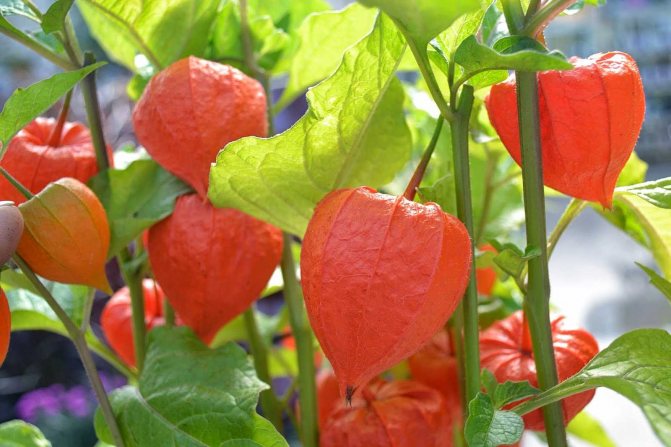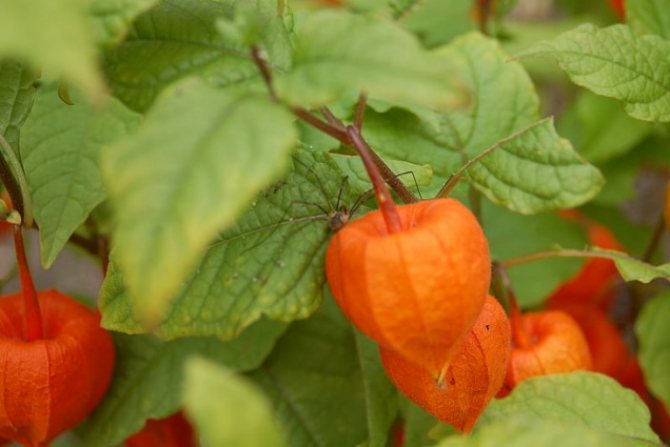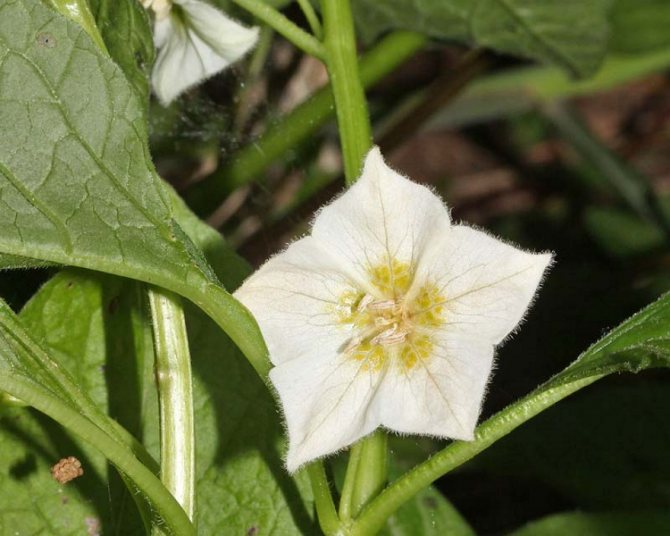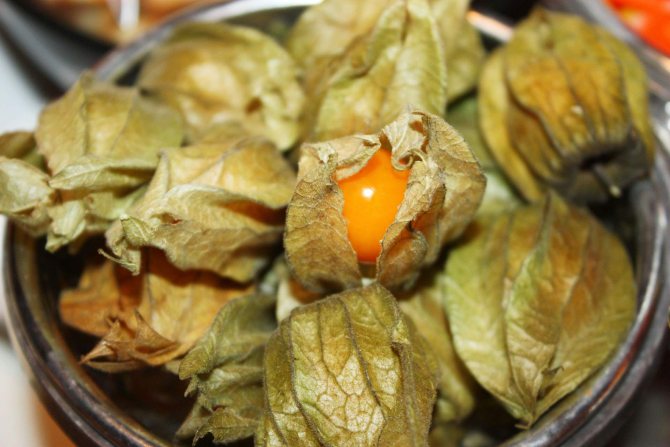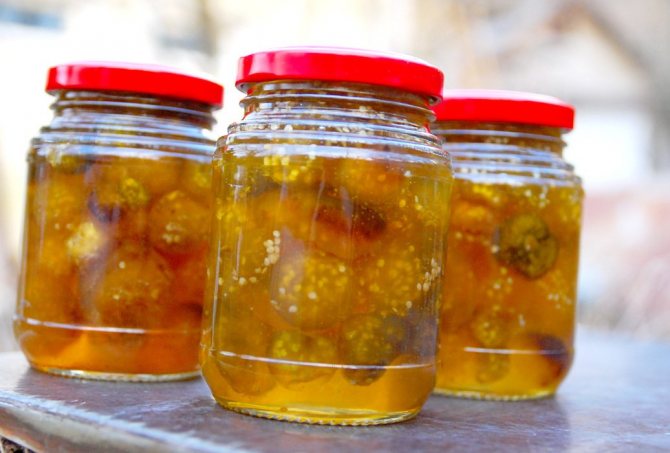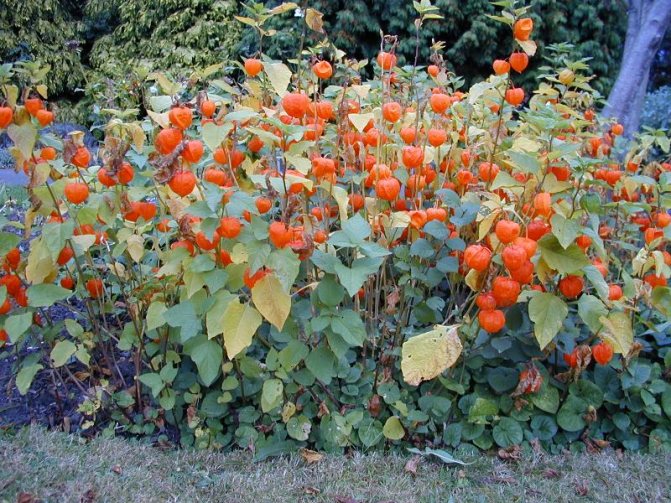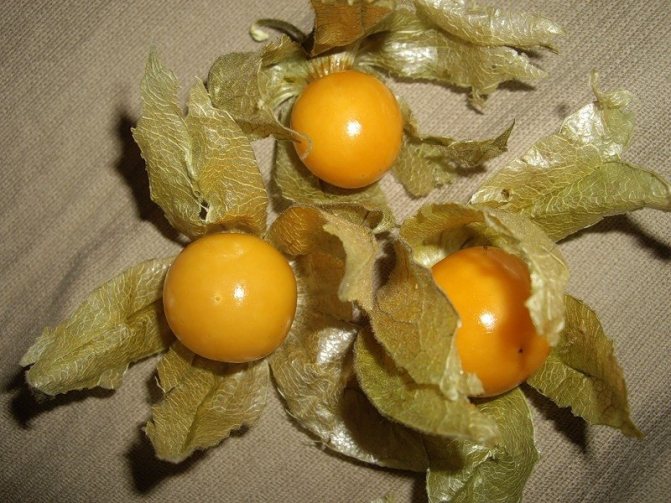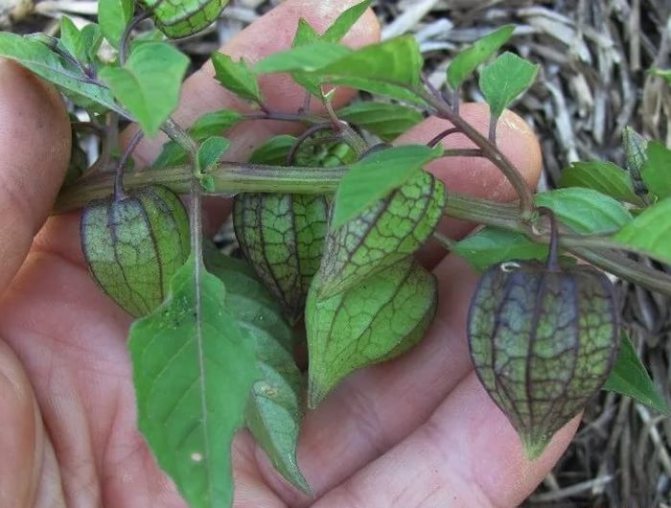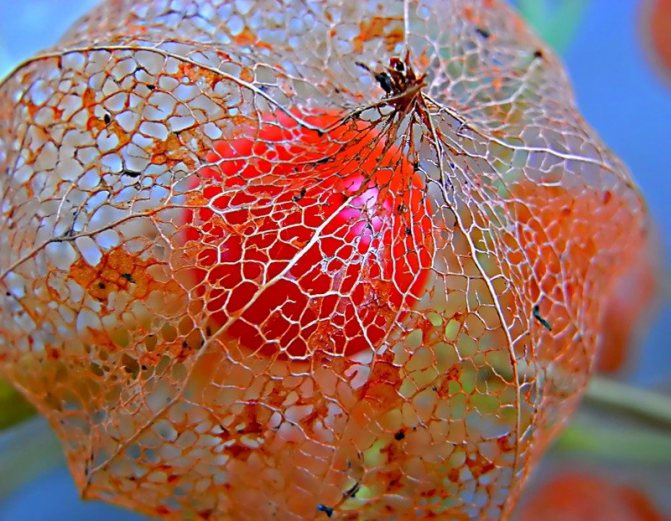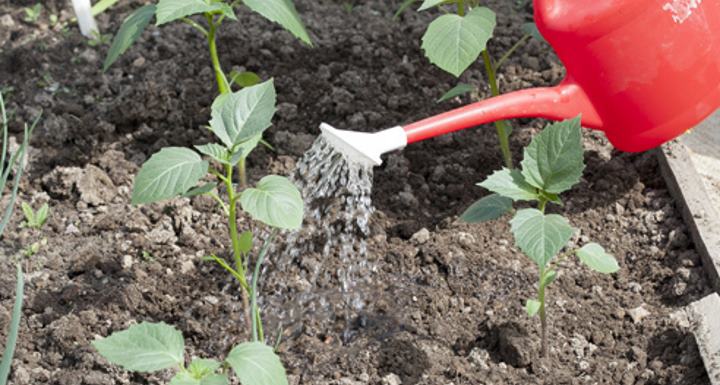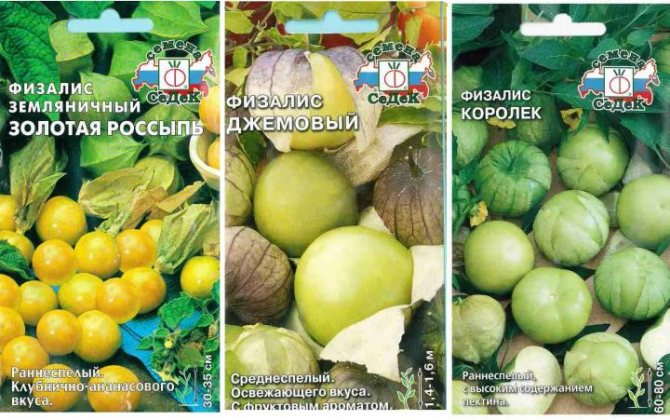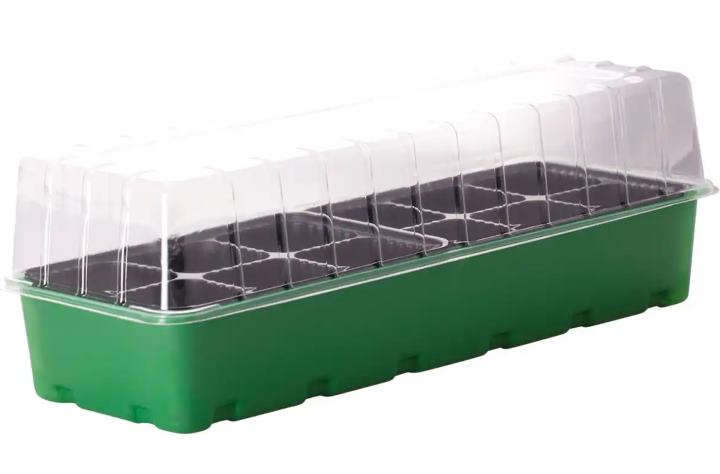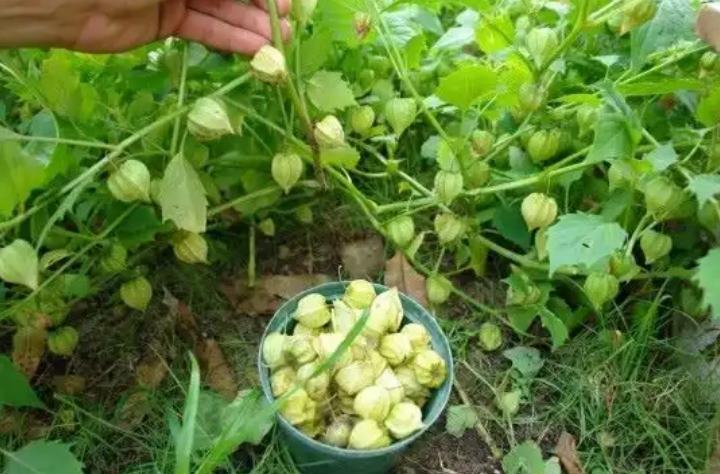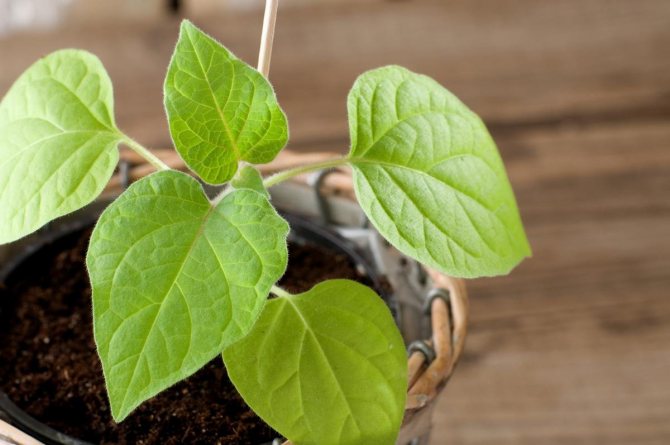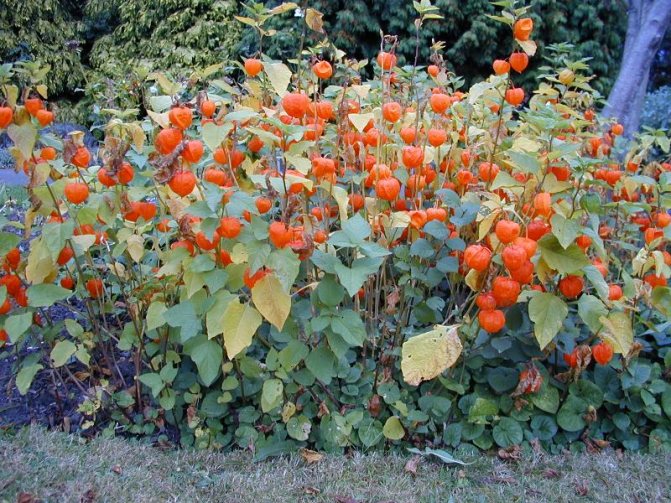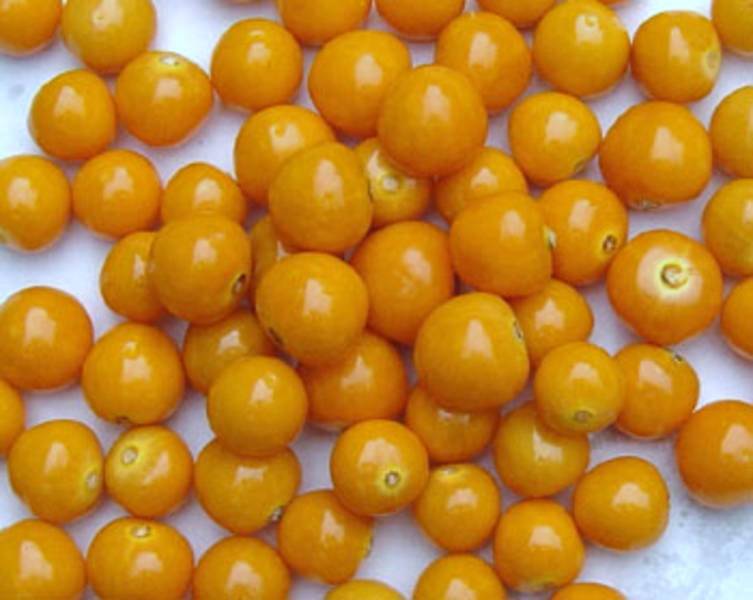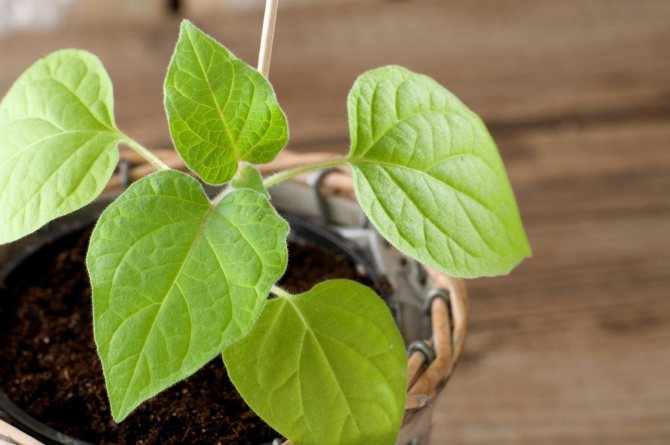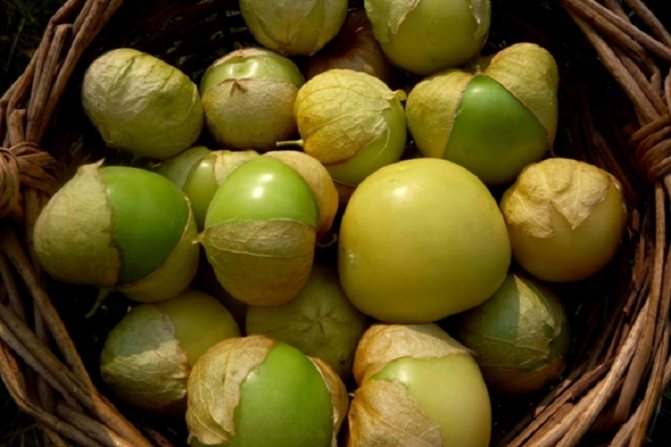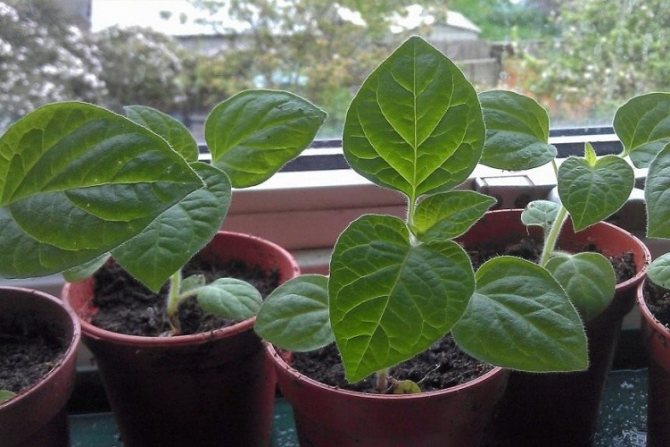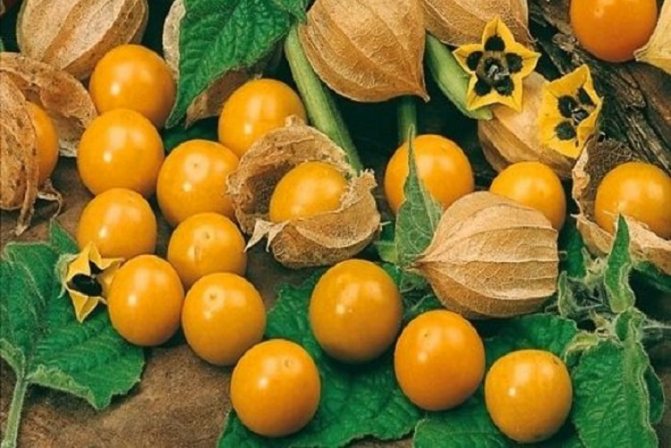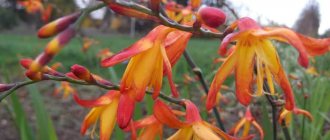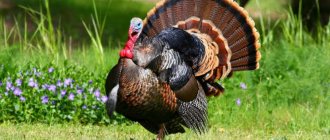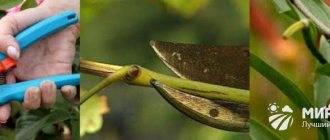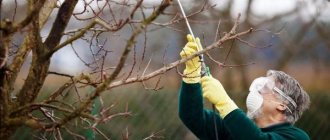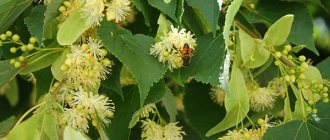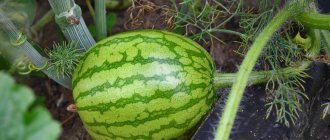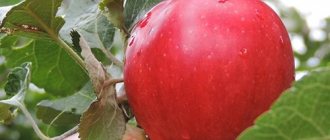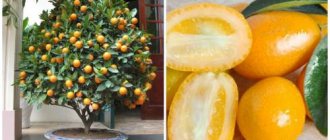Description and biological features of physalis
The plant belongs to the most numerous genus of the Solanaceae family, native to Asia, Europe and America. The name of the culture is translated from Greek as "bubble", it is associated with the unusual shape of the calyx of the plant, which has a bright, reddish-orange color.
Gardeners use more than one name for physalis - earthen cranberry or tomato, "emerald berry", "bubble", "pesya cherry", "marunka". Due to the fact that vegetable varieties of the crop belong to the Tomato family, they are often compared to this vegetable.
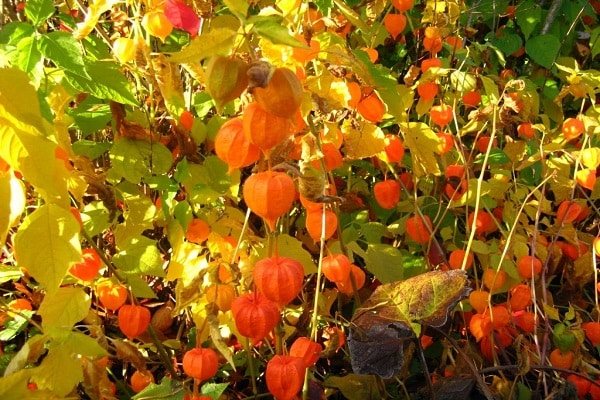
There is an annual and perennial physalis, this herbaceous plant can have branched, erect or curved, geniculate stems, glabrous or covered with a sparse edge at the top. Their height varies from 20 to 120 cm, and over time, the stems at the base become woody.
The plant has opposite leaves, single, axillary flowers, which are located throughout the stem. The calyx of the flower is bell-shaped, as if inflated; it contains orange or red berries, similar to small balls. The fruits have a very pleasant aroma, and although physalis is an ornamental crop, in some of its varieties they are edible and even very tasty. The ripening period depends on the variety and conditions in which the physalis grows.
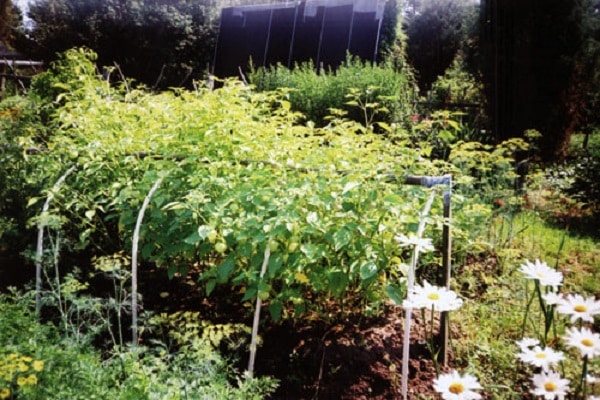

Useful properties of physalis
Edible physalis is very rich in trace elements and vitamins, it contains: fats, carbohydrates and proteins, vitamins C and A, as well as zinc, magnesium, potassium, phosphorus, calcium. The fruits have diuretic, antimicrobial and hemostatic properties. Fresh fruits of physalis help to cope with urolithiasis, and are also a good helper in the fight against bronchitis, edema, cystitis, hypertension.
The use of edible physalis helps to improve the condition of the body, filling it with the necessary substances. Cultivation of a culture does not burden the summer resident with big hassles, if the necessary conditions are created.
Popular types and varieties of physalis
There are a large number of varieties of this nightshade plant, but not all of them are most popular among gardeners. And besides, before making a choice, it is worth considering whether a bubble bottle is required to decorate the garden and home, or whether you want to taste its delicious fruits.
Vegetable
Physalis of this type is edible, it is highly resistant to low temperatures and gives a bountiful harvest of large (up to 50 g) fruits. They are used in cooking and can be stored for a long time.
Strawberry and berry
These berry crops can be attributed to heat-loving plants, they produce small fruits - weighing no more than 10 g. Physalis berries of this variety can be eaten fresh, and various desserts are prepared from them - marmalades, jellies, jams, preserves.
Growers in the cultivation of berry physalis may face difficulties - it ripens longer than representatives of other varieties. But this disadvantage is fully compensated for by the high yield and incredibly pleasant taste and aroma of the fruit.
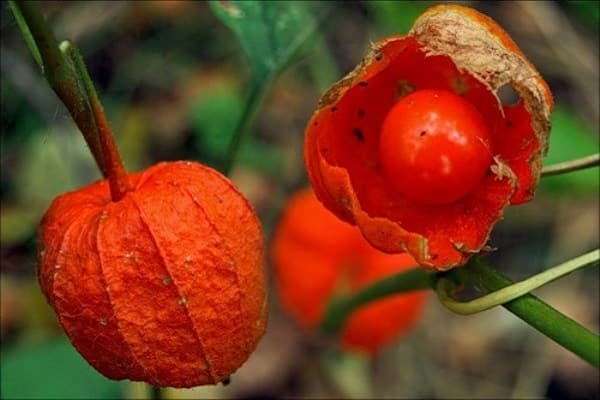

Raisin
Physalis of this variety has very tasty fruits - sweet, with a slight sourness, they resemble pineapple in taste and smell. Physalis raisin juice is similar to tangerine juice.
The culture of this variety grows better from seedlings, the fruits are stored for up to 4 months, gradually wither slightly, which makes them look like raisins.
Franchet
More often, an ornamental plant is cultivated as an annual, the height of the stem reaches 90 cm. Up to one and a half dozen "lanterns" - fruits, clothed in a bright cup, can appear on one shoot.
Gold placer
An early ripe variety of physalis, the height of the bushes does not exceed 30-35 cm. The berries are golden, weigh 5-7 g, as a rule, one bush gives a bountiful harvest.
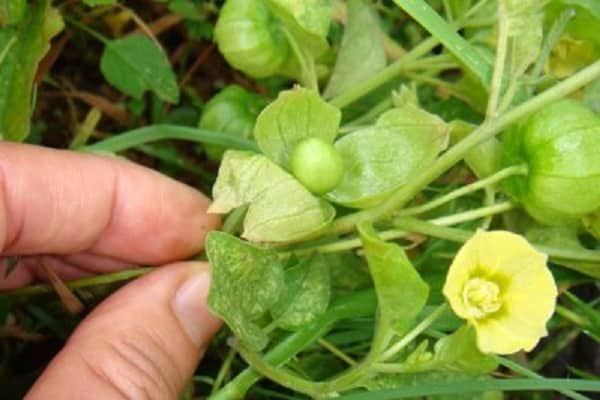

Kinglet
It belongs to early ripening varieties, its berries are used to prepare desserts and canned vegetable dishes.
Pineapple
This variety, despite its southern origin, can be grown in central Russia. It ripens very quickly - the first harvest is ready by the end of June. The fruit of the pineapple bubbler has a rich sweet taste with hints of pineapple, can be eaten fresh and used for harvesting.
Peruvian
Physalis from Peru loves light and warmth, therefore it is not often found in personal plots. And if summer residents decide to plant it, then only when providing protected ground.
The yield of the variety is low, the berries weigh 3-9 g, they have a high nutritional value and are a storehouse of useful trace elements and pectin. The pulp is juicy, bright or brownish-orange, with a strawberry and pineapple flavor.
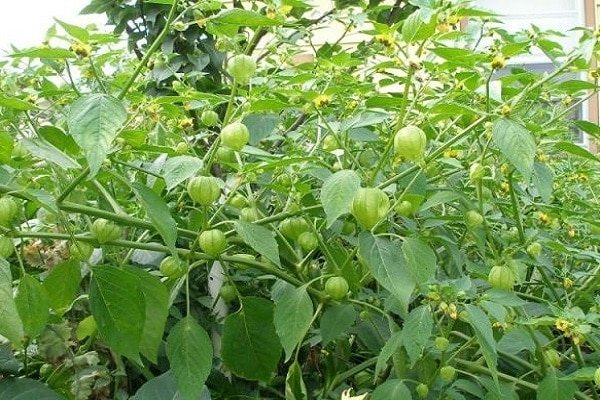

Decorative
In the garden, this plant becomes a decoration - bright, festive, but at the same time, one should not forget about its toxicity. Blooming decorative physalis are covered with neat orange lanterns.
What is physalis
There are several types of culture. Edible physalis are tomato-like vegetables and berries that are flavored with raisins, strawberries or pineapple. Decorative physalis are similar to Chinese lanterns, they are used to decorate areas, but they are poisonous, therefore they are not suitable for food.
Physalis vegetable
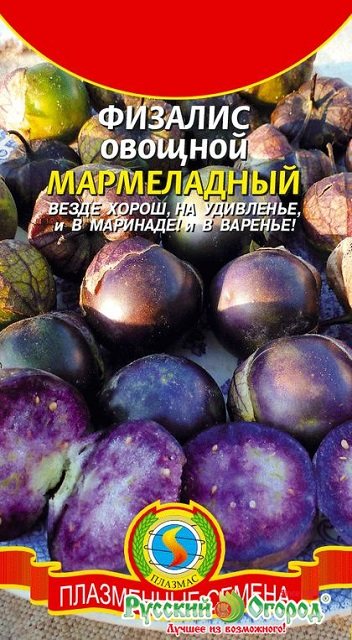

On bushy plants, tomato-like fruits are formed, which are hidden from above in a cap. Fresh fruits of vegetable physalis are not tasty, therefore they are used for preparation of preparations. It turns out very tasty jam, which tastes like figs.
You can store berries (fruits) in covers in cool conditions for about three months.
Physalis berry


Strawberry, pineapple, raisin and other types of berry physalis can be consumed fresh. Their taste resembles the taste of the plant whose names they have. The berries are also hidden in the caps, but they are smaller in size than that of vegetable physalis. Since they are stored in cool conditions for a long time (up to six months), you can enjoy the taste of strawberries, pineapple, etc. in winter. Jam is amazingly tasty from them.
By the way! With proper planting and cultivation of physalis, up to 80 berries are formed on each bush. Therefore, if you are growing a crop for the first time, have never tasted the fruits and do not know what you will do with the harvest, plant 5-10 plants in the first year. This will definitely be enough for a trial.
Physalis decorative
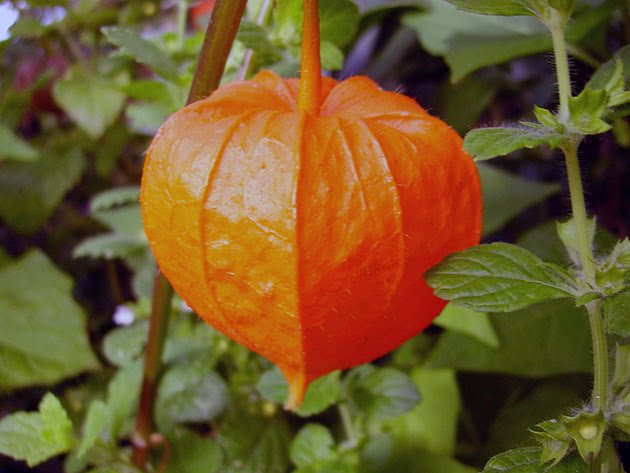

On bushes with a height of 90 cm, bright red or orange bolls are formed by autumn. It is they who decorate the sites, since the flowers of the physalis are small and inconspicuous. Red lanterns are used to decorate flower beds, make bouquets and compositions. You cannot eat the fruits of decorative physalis.
It will be interesting for you to know: What can be planted in the garden in August: planting greens and vegetables
Reproduction of physalis
In addition to seed propagation, cherries can be grown with sand from side shoots and cuttings. In ornamental species, many shoots are formed from the rhizome, therefore, in the spring or autumn, part of the root system with shoots can be dug out from the main root and transplanted.
Another method is grafting; for it, in July, the tops of the stems with several nodes and internodes should be cut off and planted in loose soil, burying them in half and covering them with perforated film. When turgor is restored on the leaves of the cuttings, the film can be removed.
It is easy to care for the cuttings during rooting, they must be watered in a timely manner and protected from direct sunlight.
See also
Growing arugula in the open field from seeds and seedlings, planting and caring for the countryRead
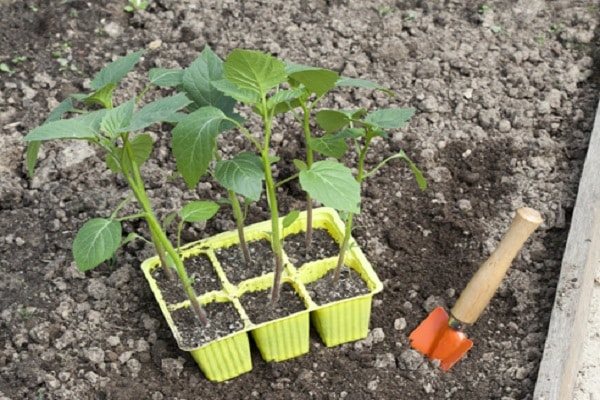

Landing dates
When to sow seeds can be calculated using simple calculations. It is advisable to plant a plant on a permanent site at 45-50 days of age. You should choose the best day, based on the weather conditions of the region, and count the time when the sprouts are ready - 4-4.5 weeks. In the middle lane and in the Urals, this period falls on the beginning of April, a more accurate date can be checked according to the lunar calendar of crops of solanaceous crops.
In Siberia, the climate is harsher; here one can expect spring frosts even at the beginning of summer, and autumn frosts already in August. Therefore, in the absence of a greenhouse, it is better to give preference to physalis, which ripens quickly - Moscow early 2045 variety, Confectioner, strawberry.
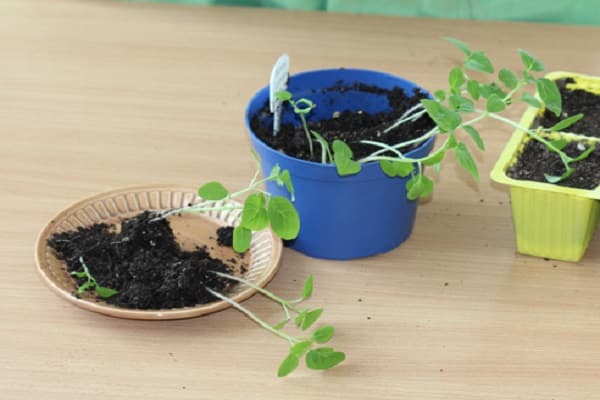

It is recommended to sow seedlings in April, and then plant them not in open ground, but under agrofibre or film. The transplant is carried out from mid to late May, depending on weather conditions.
After the first ten days of June, the shelter is removed and returned by the end of the summer period.
Description of the variety
Edible physalis is usually subdivided into two large varieties: vegetable physalis and berry. The berry variety, the most popular of which is the strawberry physalis, can grow everywhere. It is consumed not only fresh, but also dried, used to make compotes, preserves and even sweets. Berry physalis varieties are distinguished by a sweet or sour-sweet taste, they are medium-sized, most often amber-yellow in color.
Vegetable physalis, unlike berry, have larger fruits (up to 80 g). They can have a variety of colors: yellow, green and even purple. The variety is more productive, has less heat and light requirements.
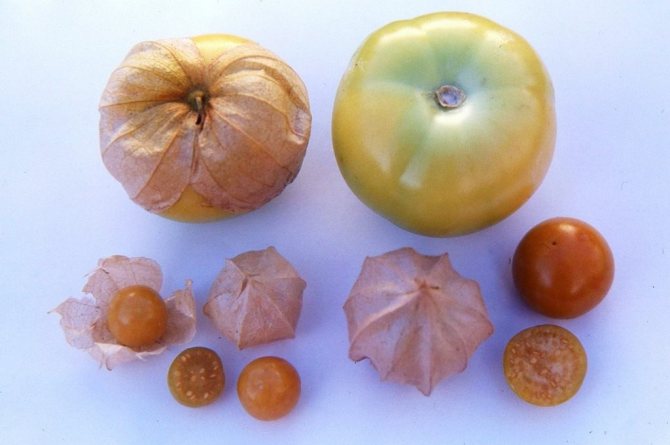

The photo in the top row shows the fruits of vegetable physalis, and in the bottom row - berry
Vegetable physalis is an annual with large, fragrant, yellow or bright orange flowers that resemble small bells. One plant of this culture can give up to 200 fruits. There are tall (about 1 m) and undersized, almost creeping on the ground, varieties. Physalis fruit has a rounded shape and is formed in an overgrown calyx, which covers it like a cover.
It is the berry sheath that is responsible for protecting it from frost, pests and many diseases, and also contributes to long-term storage.
Photo gallery: appearance of vegetable physalis
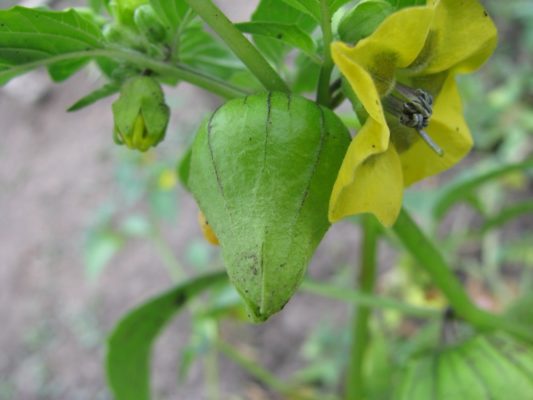

Physalis fruit is enclosed in a green box, which is formed by accrete sepals
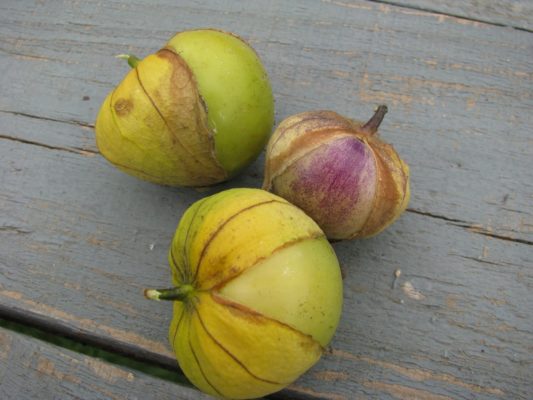

Harvesting of vegetable physalis begins in June and ends in late autumn.
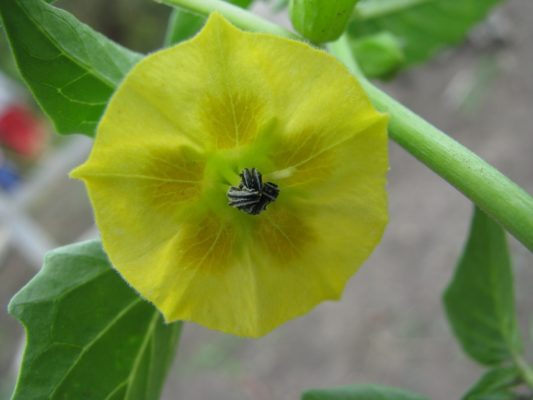

Physalis flowers can be yellow, orange, less often white, sometimes lilac.
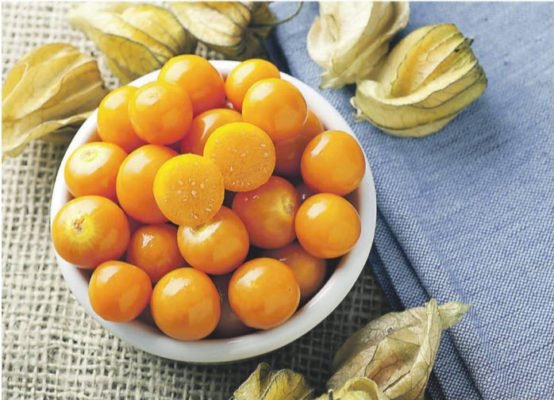

Physalis fruit is a fleshy berry of yellow-green or yellow-orange color, similar to a tomato, tastes from very pleasant to pungent bitter
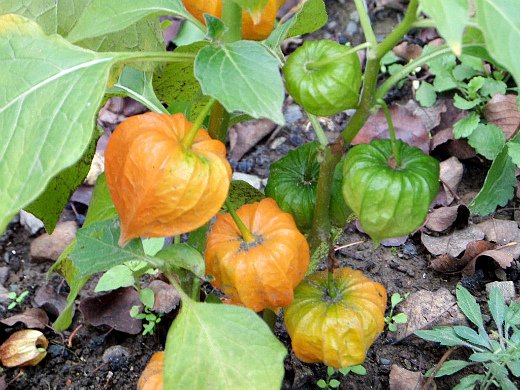

When ripe, the color of the case, in which the physalis fruit is enclosed, changes to a brighter
Growing regions and crop features
Central America is considered the birthplace of vegetable physalis. This vegetable is especially fond of the inhabitants of Mexico. They widely use its fruits in the preparation of hot sauces and salads.
The culture grows well not only in the southern regions, but also in the northern regions of the Non-Black Earth Region, and other areas with short daylight hours. Physalis is the most cold-resistant representative of the nightshade family. Its seedlings are able to withstand a drop in temperature to -3 degrees, and a powerful root system helps the crop fight drought. The vegetable is unpretentious, resistant to diseases, including phytophthora, and pests, ripens quite early and is well stored.
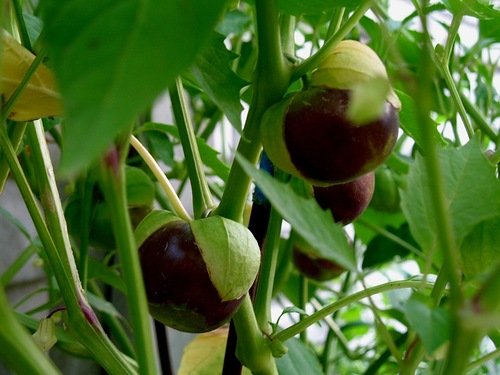

Mexican physalis is a typical vegetable crop, close to tomato in its biological properties, but more cold-resistant, drought-resistant, less demanding on light
Physalis gardeners note that working with this crop always leaves only the most pleasant impressions.
Composition, useful properties and use of vegetable physalis
Physalis vegetables are rich in carbohydrates, glucose and fructose. They contain many active substances: tannin, polyphenol, fizalin, cryptoxanin, as well as a large amount of organic acids and vitamins. Lycopene, a strong antioxidant, which is used in medicine for the prevention of cancer, gives the fruit a bright color. Nutritionists recommend including vegetable physalis in your diet due to the presence of pectin, a substance that helps cleanse the body of toxins, toxins, cholesterol and heavy metals.
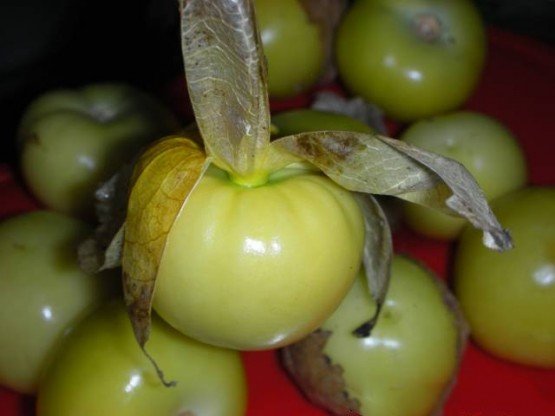

100 grams of the berries of this plant contain only 32 kilocalories, that is, almost two times less than grapes and mangoes.
Traditional medicine notes the anti-inflammatory, hemostatic, analgesic, diuretic and choleretic effects of physalis fruits. Official medicine advises people with diabetes, hypertension, cholecystitis and even stomach ulcers to use the vegetable, as well as a general tonic.
You should be aware that the aerial part of the plant, as well as the fruit sheaths, contain a large amount of alkaloids, which can have a negative effect on the human body.
The most actively used vegetable physalis in cooking:
- Physalis gives a delicate taste to vegetable stews and garnishes;
- it is recommended to add it to soups, borscht and sauces;
- from baked physalis, not only excellent caviar is obtained, but also filling for pies;
- those housewives who tried to pickle this vegetable note its similarity to canned tomatoes;
- gourmets claim that physalis jam resembles fig jam.
True, many gardeners note the not very pleasant taste of even ripe raw fruits.
Photo gallery: culinary delicacies from physalis
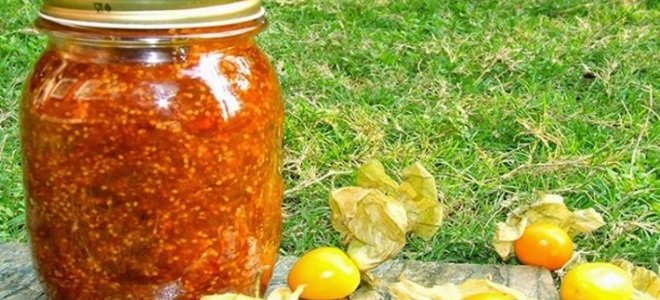

Physalis caviar can be served immediately or rolled up for the winter
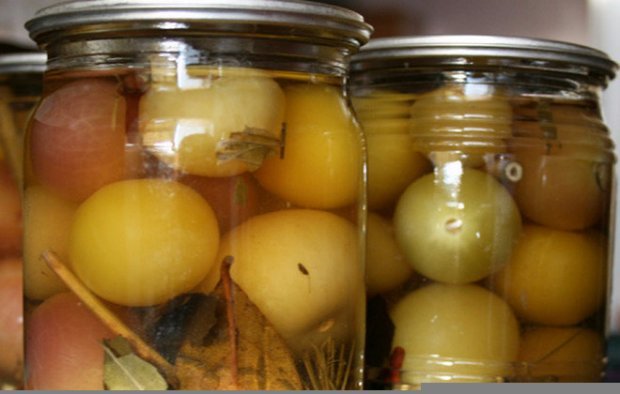

Physalis pickled for the winter resembles pickled green tomatoes in taste, only the taste of physalis is slightly softer
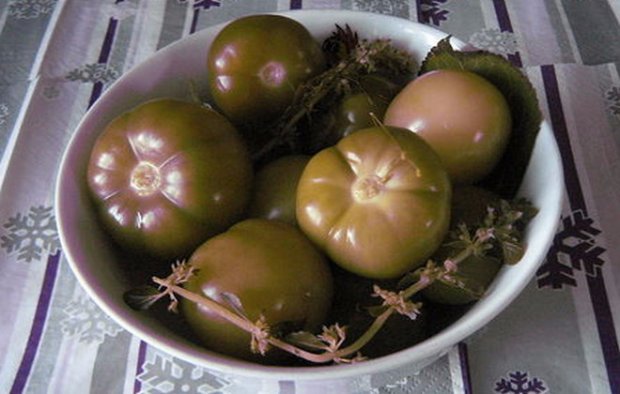

Before soaking, the washed physalis fruits should be scalded with boiling water, and then dipped in cold water
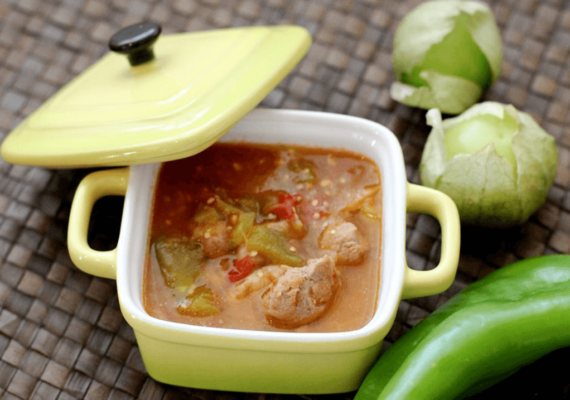

Physalis is prepared not only with paprika, tomatoes and coriander, it goes well with meat, giving it a special aroma and piquant taste.
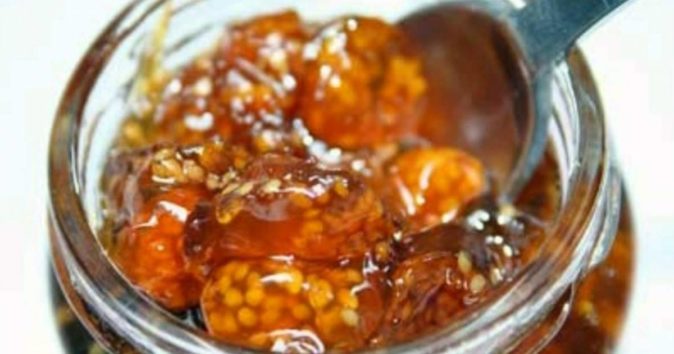

For cooking jam, vegetable physalis is not only washed, but also blanched in hot water to remove bitterness and slimy plaque
Video: vegetable physalis jam
Secrets of growing physalis outdoors
Not all plant varieties can be grown in such conditions, in addition, planting success depends on climatic characteristics. It is enough to sow some types of "bladder" by seeds in open ground, while others are grown by seedlings.
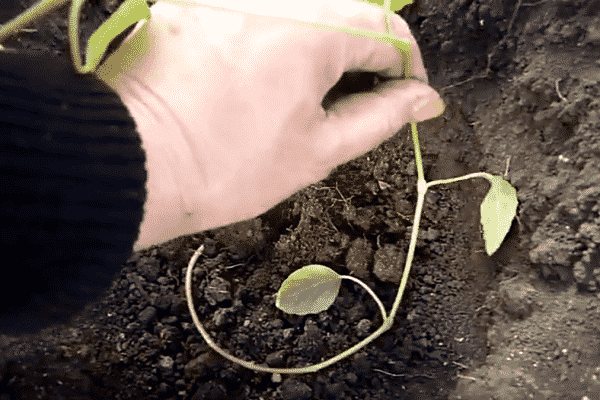

To grow physalis in the country, in the garden or in the garden, it is worth considering some of the needs of this unusual culture:
- The heat-loving "bubble" needs an abundance of sunlight, so you need to choose areas with good lighting for it.
- In the place where it grows, moisture should not accumulate and stagnate after rain.
- Sprouts thrive better in pre-cultivated soil, in which representatives of other cultures grew before them. This will promote more active planting growth and increase yields.
- Physalis grows poorly in the vicinity of weeds, so it will need regular weeding.
- Acidic soil is not suitable for an emerald berry, if the plant is placed in such conditions, it will not take root or will constantly get sick.
To make the soil more suitable for this culture, you can use liming - additional components are added to it: quicklime, wood ash, "Fluff" or dolomite. When using supplements, follow the instructions in the instructions.
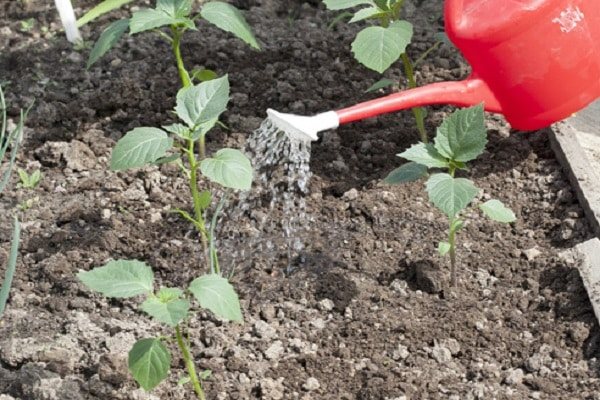

Physalis preparation for planting seeds
The seed material of the "Chinese lantern" is small, so it is not worthwhile to sort it out one by one. To select good seeds, they should be tested in 5% saline solution. Those that surfaced are sent to marriage; seeds that have sunk to the bottom are considered suitable.
Before sowing, they must be disinfected - soak for 30 minutes in a weak solution of potassium permanganate. After that, the material is washed, dried and stored until planting.
If physalis is to be sown directly into the open ground, then these activities can be carried out on the personal plot, before placing the seeds in the soil.
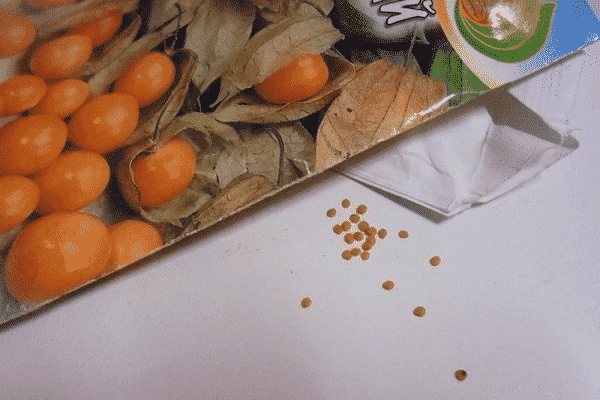

Seed breeding
Gardeners are often faced with the problem of acquiring high-quality seed, so they try to get it on their own plot. The simplest selection is to select seeds from the best plants:
- in strawberry and Peruvian bubble worm, these are representatives with the highest yield, large fruits and high taste;
- with Mexican physalis, selection turns out to be more difficult - the plants inherit the characteristics of both pollinated and pollinated vesicle, so it is better to take seeds from the fruits of various bushes, and then plant them in separate areas.
Experienced gardeners can independently select crops by crossing different varieties in order to obtain the most productive plant with fruits that meet their requirements. But most often this is done by professional seed growers.
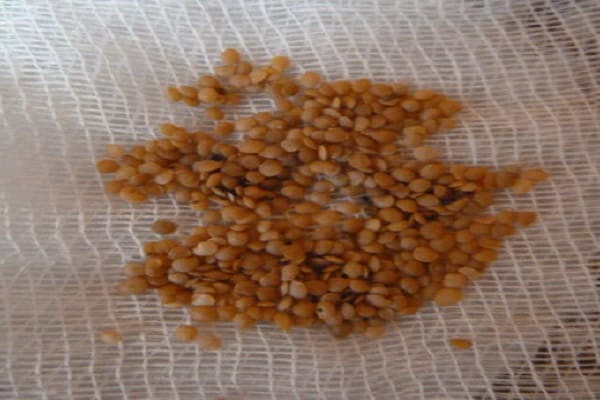

Growing seedlings
In many ways, growing Chinese lantern sprouts is similar to obtaining planting material for tomatoes. So basic knowledge of this process is enough to get a positive result.
Soil preparation
As a soil, you can use a finished product intended for other vegetable crops: tomatoes, peppers, eggplants. And if you have free time, then it is better to make the soil yourself. It will require:
- 40% peat;
- 25% humus (rotted compost);
- 25% of the land (garden or turf is suitable);
- 10% river sand (it must be washed).
The resulting mixture should be sieved, and in order to eliminate the likelihood of infection with fungal diseases and reduce the amount of weeds, it is advisable to steam it for an hour.
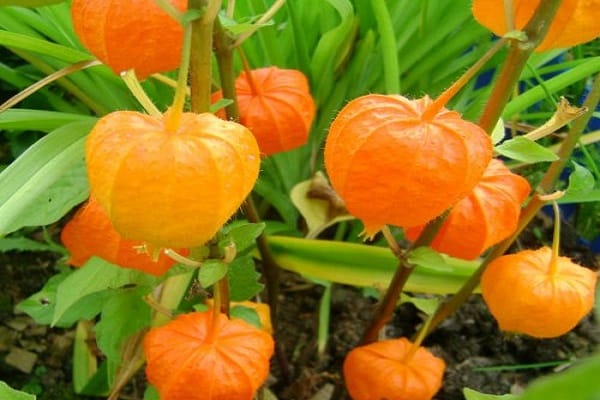

Sow a bubble wort in the area from mid-spring to early May, placing the seeds in a thin strip in the furrows, the distance between them should be 25-35 cm. they have a high survival rate.
The benefits and harms of strawberry physalis
The first tribes of Central and South America learned about Physalis 4000 years ago. Due to the large amount of nutrients, physalis was used to treat many diseases. Modern scientists have proven that by using the fruits regularly, you can prevent the occurrence of many diseases. Useful properties of physalis:
- Due to the high content of K and Mg, it normalizes the work of the heart muscle. Reduces the likelihood of heart attack, stroke, atherosclerosis and aneurysm.
- The antioxidants contained in the berry prevent the appearance of malignant tumors.
- Reduces the risk of joint disease. Physalis relieves the condition with exacerbation of arthritis and arthrosis. It removes salts from the body.
- The blood sugar level returns to normal. Despite the fact that the berry is sweet, it can be used for different types of diabetes.
- Due to the high content of beta-carotene, vision improves. Physalis prevents the appearance of cataracts, glaucoma and stops macular degeneration and lens opacity.
- Strengthens the immune system. Due to the high content of vitamin C, the berry saves from vitamin deficiency, colds and viral diseases, and also quickly restores the body after surgery.
- Improves the functioning of internal organs. Reduces the risk of constipation, stomach cramps and flatulence. The fiber and pectin contained in the berry prevent gastritis, ulcers and colitis.
- Slows down the aging of cells, eliminates wrinkles, age spots and improves the structure of the skin.
- Accelerates the healing of wounds, burns and ulcers. Physalis pulp gruel accelerates cell regeneration, alcohol infusion - relieves scars and scars.
- Due to the high content of B vitamins, efficiency increases, fatigue decreases, vitality is restored, and the risk of migraine, muscle cramps and depression decreases.
Despite the large number of useful properties, physalis also has contraindications. It is not recommended to be included in the diet for pregnant and lactating women and people with high acidity of the stomach.
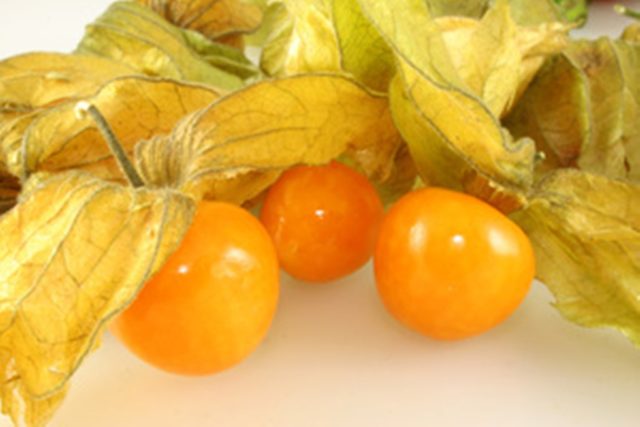

Important! In the presence of chronic diseases and an allergic reaction, a doctor's consultation is required before consuming strawberry physalis.
Physalis can only be consumed with fruits, all other parts of the plant are poisonous. Particularly dangerous are lanterns that cover the fruit.
Planting a plant on the site
An earlier planting of physalis sprouts with 3 leaves in the ground can be planned, but only with the provision of mandatory shelter. Plants with 6-8 leaves can be planted in open soil, but only if warm weather is established, and the likelihood of frost is excluded. The most favorable air temperature is + 20 ... + 22 C.
Those wishing to get a bountiful harvest and beautiful vegetation should pay attention to the following features of the process:
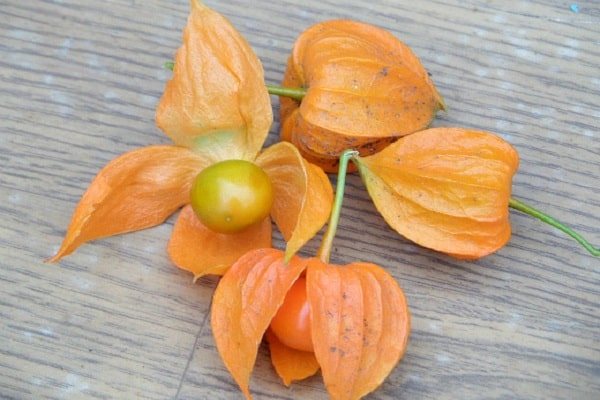

- Seedlings of tall and medium-sized varieties require an intermediate transplant into a more spacious tank before rooting in the open field.
- All "young" physalis are shown hardening - the pots with seedlings should be held in a shady area, where direct sunlight does not fall.
- Since most of the bushes of the cherry blossoms branch fairly well, it is better to replant the plants using a checkerboard pattern, the average step size is 50 cm.
- Representatives of tall varieties must subsequently be tied up, it is advisable to provide for this during their planting in the ground.
- The sprout should be immersed in the hole until the first true leaflet.
- If the seedlings have outgrown, then they are planted as follows: 1.5 liters of water are poured into the recess and the seedling is placed with a slope into the water, this will allow the roots to straighten themselves; then the hole must be covered with soil and compacted.
- Sprouts that are planted at one time do not require such manipulations: they are placed in the ground in the traditional way, and after the procedure they are shed well.
See also
How to plant sorrel and care for it in the open field, how to feed it after cuttingRead
To facilitate further care of the crop, it is recommended to mulch the soil using peat.
Physalis planting and necessary preparatory procedures
Physalis is a real find for lazy gardeners. Minimal care is required. Nevertheless, certain efforts still need to be made to create the culture of optimal or close conditions to them. Without this, abundant fruiting is impossible.
Physalis does not impose excessive requirements on the quality of the soil.He is quite satisfied with both heavy clay and light sandy soil. The only thing that he categorically does not tolerate is acidified or salted substrate. And if the first can still be corrected by adding dolomite flour, ground eggshells or wood ash to a powder state, then in the second case you will have to look for another site. It is desirable that the soil is loose. In heavy soil, it is better to pre-add a little sand.
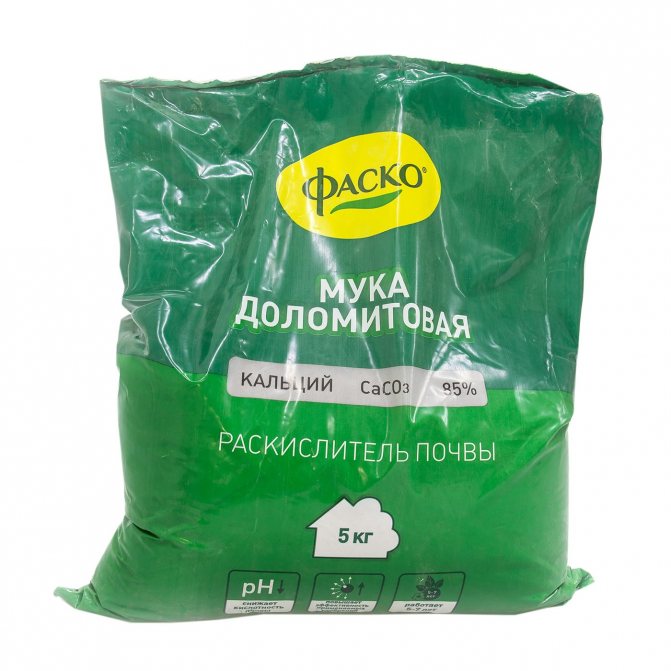

Dolomite flour is a natural soil deoxidizer, when the dosage is observed, it does not have any side effects
The plant tolerates both bright sunlight and shade, but in the first case, the ripening of the fruits is delayed, because this is a culture of short daylight hours. Therefore, for physalis, you can not even set aside a separate bed, planting it under fruit trees, between shrubs, near a fence, and so on.
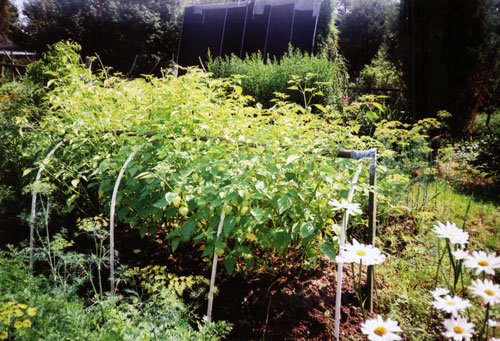

Physalis can be planted in an area that is not suitable for other horticultural crops, the requirements for the plant are minimal
Practice shows that you only need to plant physalis at the selected place once. The plant is annual, but it reproduces well by self-sowing. You just need to let a few fruits ripen and fall to the ground. The frost resistance of the seeds allows them to successfully endure even the harsh Ural and Siberian winters. But nevertheless, it is better to play it safe and in late autumn to throw fallen leaves, straw, and snow on top of the garden.
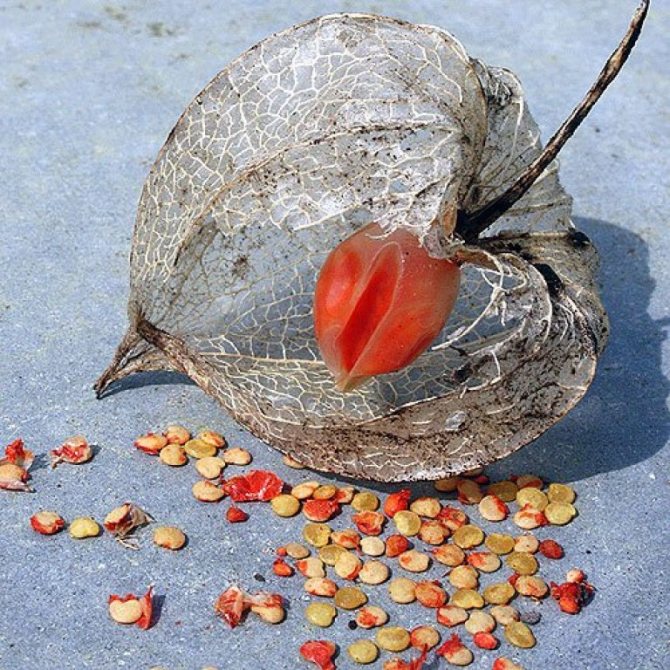

Physalis berry reproduces well by self-sowing, you need to give several fruits to ripen and dry on a bush
It is undesirable to cultivate physalis where other Solanaceae used to grow (tomatoes, potatoes, eggplants). In principle, he is not susceptible to diseases, but in this case the risk increases. Any other horticultural crops will work as precursors, especially Pumpkins, Legumes and all types of cabbage.
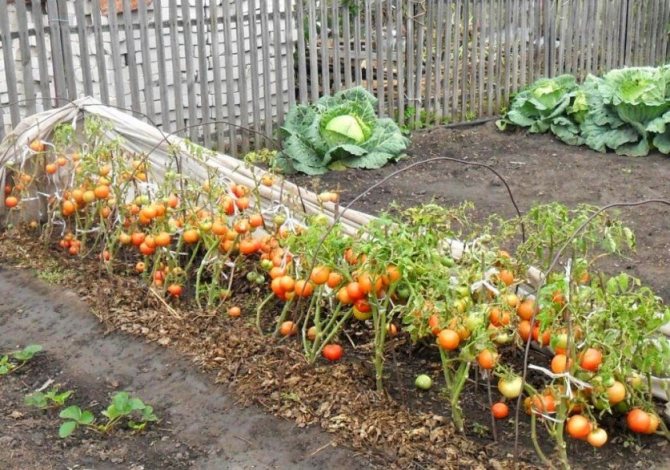

Tomatoes, like other Solanaceae, are bad predecessors for physalis.
The selected area is dug up and cleaned of weeds. This can be done both in autumn and spring. If earlier something was grown here and, accordingly, fertilizers were applied, now you can do without them. Otherwise, humus or rotted compost is needed (about 5 liters per running meter). A useful additive is sifted wood ash. Fresh manure is categorically excluded - it will simply burn the roots, the plant will die.
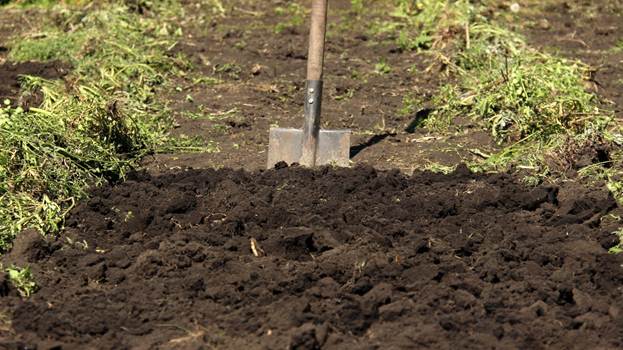

It is enough to dig a bed for berry physalis to a depth of one bayonet of a shovel
Growing physalis in a seedless way in Russia is practiced mainly in the southern regions with a warm subtropical climate. In such conditions, the gardener can be sure that they will have time to ripen. In the Urals, Siberia, and other regions, summer can last much less than the required hundred days. Although, of course, no one forbids taking risks.
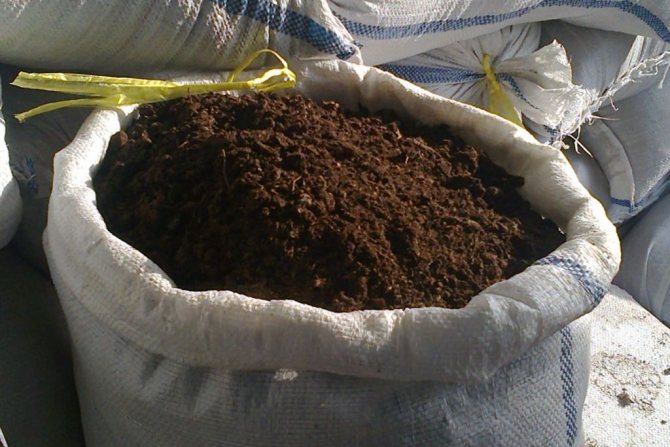

Humus is a natural remedy for increasing soil fertility
Seeds are planted in the ground from the first half of April to the 20th of May. By this time, the air should warm up to 15 ° C, and the soil at a depth of 8–10 cm - at least to 7 ° C. They are sown in grooves about 5 cm deep, maintaining an interval of 7-10 cm between them. It is rather difficult, the seeds are small, so it is better to pre-mix them with sand. Before the emergence of seedlings, the beds are tightened with a film. When the plants form two true leaves, thinning is carried out, leaving at least 25 cm between adjacent specimens. No more than ten seedlings should be located per 1 m². Those that thicken the planting can be transferred to any other place. They will most likely take root successfully and will also yield a harvest, but only 7-10 days later.
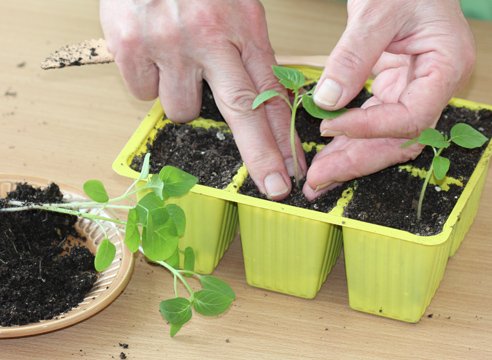

Physalis seeds are small, so the seedlings need to be dived, and the seedlings in the garden need to be thinned
Growing physalis in seedlings allows you to get berries faster.Also, practice shows that in this case, the yield increases due to the stretching period of fruiting.
The seeds can be purchased or harvested by yourself. Several ripe large fruits are peeled, ground into pulp and allowed to dry. It will soften more if you pre-hold the fruits, cut in half, for several hours in water. When the pulp turns into dust, it is sieved, removing the planting material.
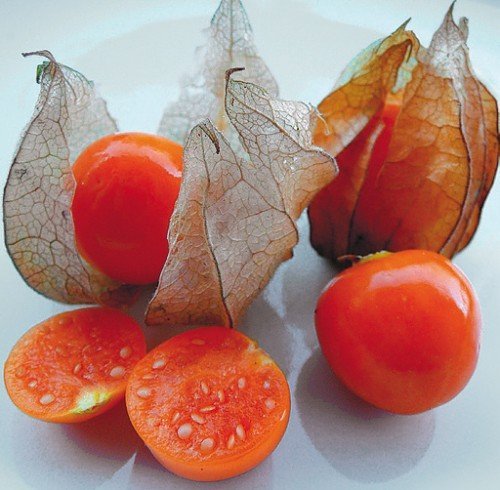

There are many seeds in each physalis fruit, so problems with planting material, as a rule, do not arise.
There is also another way. Before the first frost, the physalis bush is dug from the garden bed, transferred to a warm room and hung, having spread a soft cloth under it. As the seeds ripen, they will fall to the floor on their own. But in this case, the process will drag on for several months.
Before planting, the seeds are immersed in a salt solution for several minutes. This allows you to reject those that will definitely not germinate - they float to the surface. Those remaining at the bottom are washed and dried. For disinfection and disinfection, they are etched in a solution of biofungicide for a quarter of an hour or kept in water for 6–8 hours with the addition of several crystals of potassium permanganate (to a bright pink color). After that, they will also need to be rinsed in running water and dried.
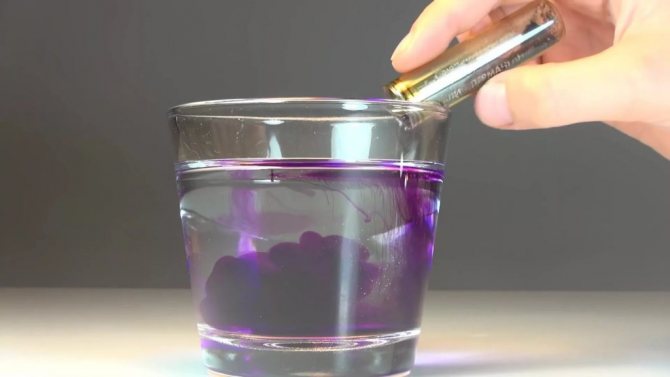

Potassium permanganate solution is one of the most famous disinfectants
For seedlings, seeds of berry physalis are sown in mid-April. The seedlings will be ready for transplanting to a permanent place in the second decade of May. By this time, they should have reached a height of 10–12 cm. The interval between the bushes is 40–45 cm, the row spacing is 70–80 cm. The procedure is carried out about 1.5 weeks earlier than the planting of tomatoes.
Recent Entries
7 super early and delicious potatoes to plant in 2020 6 rare 2020 tomato varieties to bring you a decent harvest 5 cucumber hybrids I will plant this year without hesitation
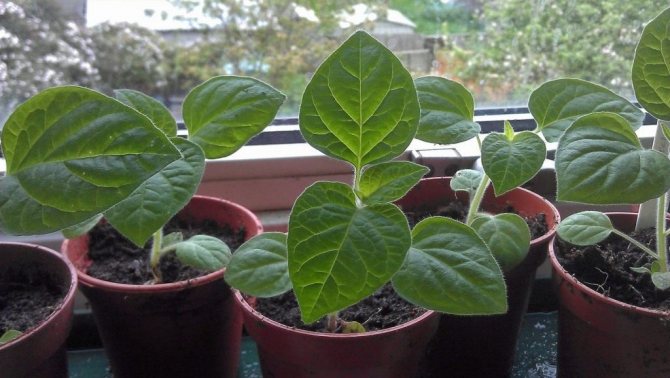

Physalis seedlings develop quickly enough, so there is no need to plant seeds too early
It is best to purchase a special soil for growing Solanaceae, although a universal substrate for seedlings and just garden soil are suitable. Any soil must be sterilized. To do this, it is fried in the oven, frozen in the freezer, or simply put on the balcony in winter for several days. The easiest way is to spill the soil with boiling water or a dark purple solution of potassium permanganate.
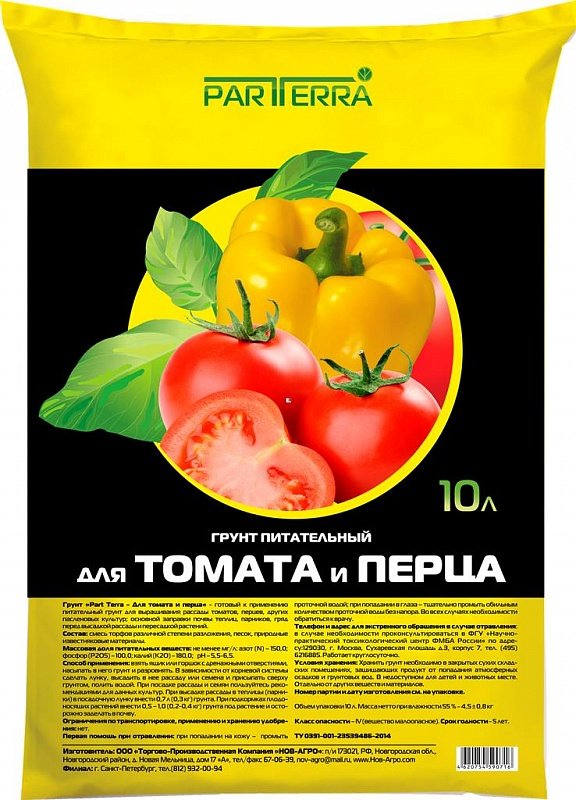

Soil for Solanaceae is also suitable for berry physalis, but you can use any other substrate
The procedure for growing seedlings is not particularly difficult:
- The prepared substrate is poured into plastic cups, peat pots, and other small containers. It needs to be watered and leveled sparingly. 2-3 seeds are sown in each container. Then they are covered with foil or glass. The optimum temperature is now around 25 ° C. Light is not needed at this stage yet. The "Greenhouse" is ventilated daily, preventing condensation from accumulating. Physalis can also be planted in common containers, but then you have to fiddle with a pick. Also, the experience of growing a culture shows that in this case the percentage of weak and deformed seedlings increases.
- The emergence of seedlings will have to wait 6-10 days. After that, the shelter is removed. The temperature is slightly lowered to 20–22 ° C. Required daylight hours, lasting 8-10 hours. Otherwise, the seedlings are ugly stretched out, lagging behind in development. If there is not enough natural light, phytolamps are used. Ordinary luminescent LEDs are no worse.
- Further care for seedlings of berry physalis is reduced to periodic watering as the soil dries up. Enough 2-3 times a week. After about 15–20 days, the plants will need to be fed.Use either a weak solution of nitrogen-containing fertilizers (2-3 g per liter of water) or commercially available complex dressings designed specifically for seedlings. When more than one seed germinates in the pot, in the phase of the second true leaf, the "extra" specimens will need to be transplanted into another container or simply thrown away if the planting material is not in short supply.
- About a week and a half before planting in the ground, hardening begins. It should be 8–10 ° C warmer outside. Pots with seedlings are taken outside for several hours every day, gradually extending the time spent outdoors. In the last 2-3 days, they can even be left to spend the night outside the house.
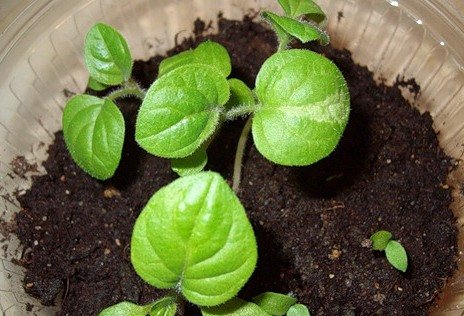

Physalis seeds sprout quickly and massively
Video: planting physalis seeds for seedlings
It is advisable to transfer the seedlings of berry physalis to open ground in the evening and immediately stretch a canopy over the garden bed from any white covering material. This will protect the delicate leaves from sunburn, the plants will take root faster. The cover can be removed after about a week.
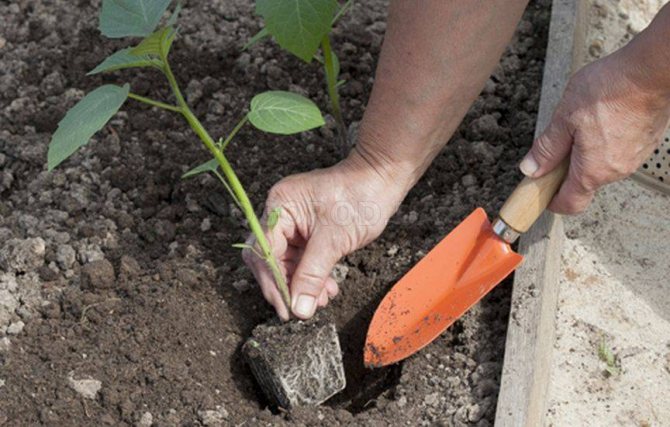

To make the plants easier to remove from containers, about half an hour before planting, physalis should be watered abundantly
Unlike most horticultural crops, newly planted physalis does not need watering. It is enough to moisten the soil in the hole before planting and spill the seedlings well in a pot to make it easier to remove them from the container. A handful of humus is placed at the bottom of the hole. Plants are buried to the first true leaf.
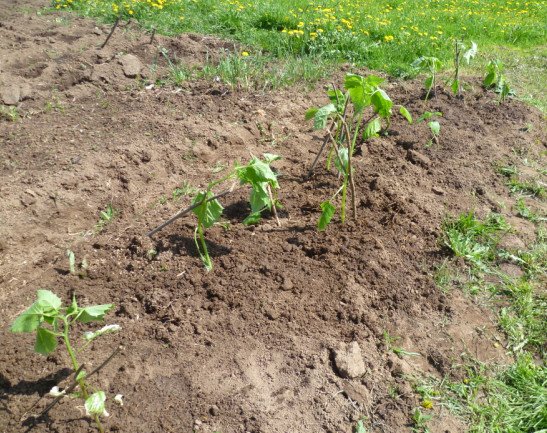

Physalis planted in the ground must be protected from direct sunlight for the first time, otherwise the plants may get burns
Features of physalis care
Having planted the shoots of an exotic plant in the ground, you must continue to take care of them. Care is reminiscent of growing tomatoes, only physalis does not need pinching - fruits are formed on the side branches.
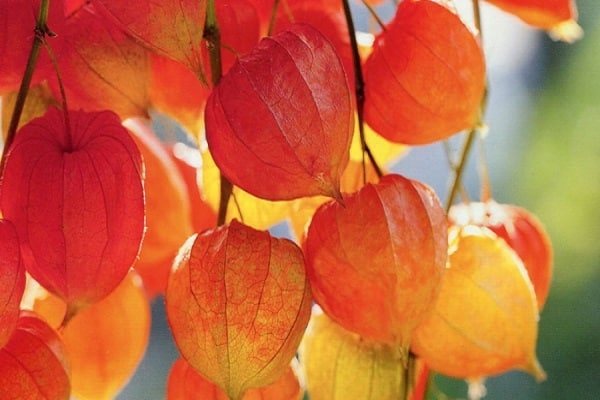

Loosening
It is important to avoid crusting and cracking the soil. To do this, you should take the time to loosen it.
Watering rules
It is recommended to water the seedlings regularly until August 15-17, later it is better to reduce the frequency of watering - this will speed up the ripening process of the berries. Physalis is not afraid of heat and drought, it is highly resistant to such conditions.
In the heat, you can water the bushes a couple of times a week, and when the air temperature is moderate, one watering every 7-8 days is enough.
Weeding
It is necessary to hold this event, but it is enough to do it once every 3-4 weeks, not more often.
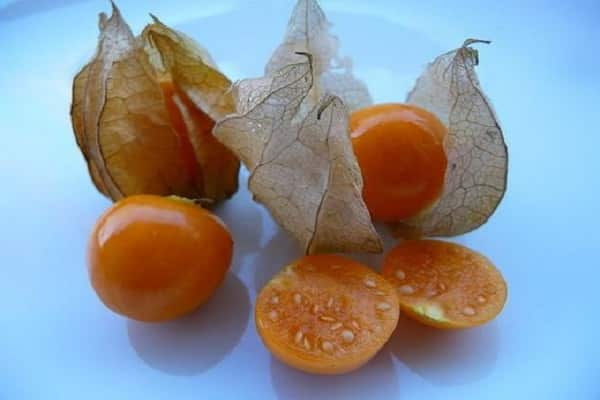

Top dressing
After half a month after transplanting the seedlings into the ground, you can start feeding them. Experienced gardeners recommend fertilizing after watering. You can use both organic and mineral compositions, but the best result can be achieved if you alternate them every one and a half to two weeks.
For physalis, the following fertilizers are allowed:
- Ammonium nitrate - a solution is prepared at the rate of 10 g of substance per 5 liters of water. It is better to apply after picking, when the leaves become pale greenish in color.
- Organic (poultry manure, cattle manure) - mullein is bred at the rate of 1:10, manure - 1:15, about 5 liters of the composition are introduced for every 1.5 sq. m. Such dressing is very useful for weakened vegetation, effective after picking, during flowering and fruit formation.
- Superphosphate is a complex fertilizer for vegetable crops. The composition is prepared from 15 g of the substance per 5 l of water.
- Wood ash - it is recommended to apply during the entire growing season; dilute at the rate of 15 g of substance per 5 liters of water.
During the introduction of fertilizers, it is worthwhile to be careful and make sure that the compounds do not fall on the leaves and stems of the physalis, as they can cause a burn.
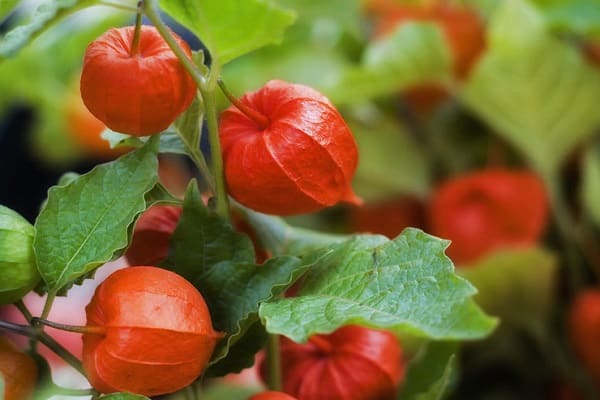

Pest control
There are several particularly "stubborn" and dangerous pests that are not indifferent to earthen tomatoes and can ruin them and deprive the owner of the crop:
- Medvedka is a large orthoptera insect that harms the physalis root system by gnawing at the roots.You can protect the culture from it by spring and autumn digging of the soil - this event will lead to the destruction of the pest's nests. In summer, it is recommended to loosen the soil by at least 20 cm. You can scare off the bear by watering the plant with a solution of bird droppings, as well as planting marigolds next to the bubble.
- Aphids - this dangerous parasite is a carrier of late blight. Insecticides serve as protection against it, with which the bushes should be treated 3-4 times per season.
- Wireworm - the larvae of all click beetles are a thunderstorm of roots and tubers, which cause serious damage to the underground part of the plant. It is recommended to add ash to it while digging the soil - alkaline soil is not to the taste of the larvae of beetles.
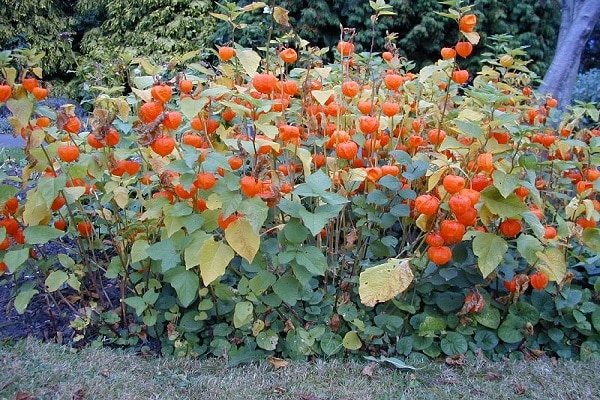

Disease protection
In general, Physalis is a healthy crop that is disease resistant. However, under negative conditions, the risks of developing diseases are present.
Seedlings growing in high humidity conditions can be affected by fungal pathology, which is called "black leg". It is not difficult to notice the disease - the base of the stem turns black and the sprout dies.
As a rule, with proper care of seedlings and seedlings - loosening, watering, thinning, it is possible to avoid the disease.
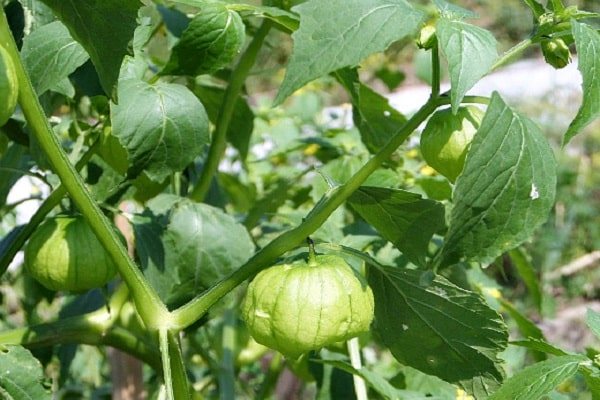

Another disease that does not spare all nightshade is late blight, which poses the greatest threat to crops during fruit ripening. The fungus infects the berries, and they become covered with brownish subcutaneous spots, such fruits are inedible.
In the fight against late blight, the most effective spraying of the ground part of the plant with Bordeaux liquid, from which the solution is prepared. The event is held in advance, before the bushes are covered with ovaries.
Physalis pests and diseases
Among the large number of pests, there are several that are most dangerous for physalis:
- Aphids carry late blight, which is dangerous for all nightshade crops. You can get rid of this insect if you treat the bushes with an insecticide at least once a month before fruiting.
- Medvedka is capable of damaging the physalis roots so much that the plant will die in a short time. For preventive purposes, the soil is dug up in spring and autumn, which destroys the insect's nests. Regular loosening of the soil in the summer to a depth of 20 cm also helps to get rid of the bear. This pest can be scared off by watering with water with bird droppings or marigolds planted nearby.
- The wireworm, like the bear, damages the roots of plants. Timely digging up the soil, with the addition of ash to it, will help frighten off the larva.
With proper care, physalis are rarely afraid of any diseases, but if conditions worsen, difficulties are possible. In high soil moisture, the seedlings can be damaged by fungi called "black leg".
Important! The most common disease of nightshade crops is late blight. It is characterized by the appearance of dark spots under the skin on the fruits, arises from high humidity and frequent rains during the period of berry formation. Diseased fruits should not be used for food. To prevent the disease, the bushes are sprayed with a 1% solution of Bordeaux liquid until the ovaries appear.

